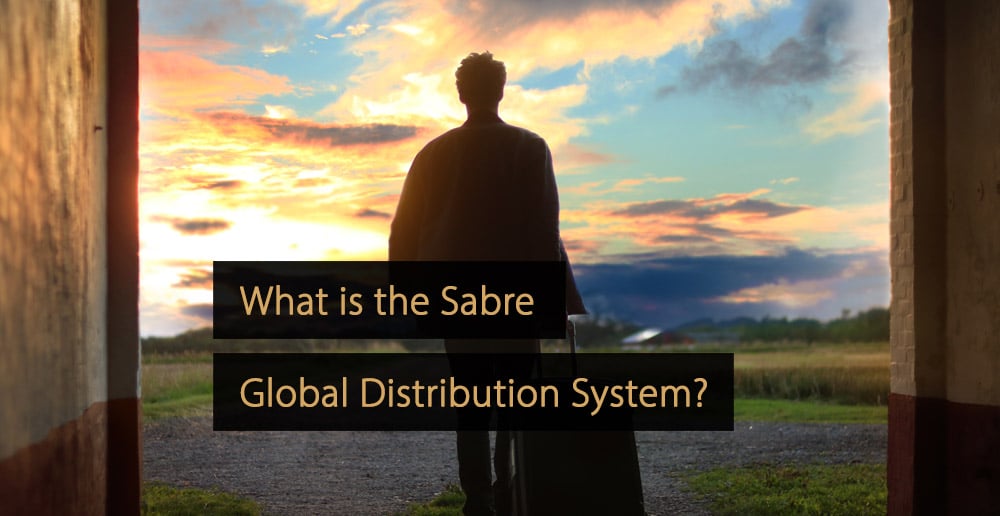A global distribution system, or GDS system, is one of the most important distribution channels for those in the hotel industry, allowing travel agencies to access live inventory information and rates, and to sell hotel rooms and other travel services to their customers. In this article, you will learn more about Sabre GDS and how it can benefit hotel owners and others within the travel industry.
What is a GDS System?
A GDS system, or global distribution system, is a network that enables travel agencies and others within the travel industry to access travel products and services, including hotel rooms, airline tickets, and car rentals, to carry out transactions. Crucially, they provide end users with real-time access to inventories and pricing.
Typically, a GDS system is one of the most important distribution channels for those operating in hotel management, because it will make the hotel visible to travel agents, who can then book hotel rooms on behalf of their clients. This then has the potential to increase the number of bookings the hotel generates significantly. You can read more detailed information about global distribution systems and the benefits for hotels in the article “Global Distribution System (GDS): What Are the Benefits for Hotels?”.
What is Sabre GDS?
Sabre is regarded as one of the ‘big three’ GDS systems, with a history that can be traced back to the 1960s. The company and network is based out of Southlake, Texas, in the United States, and it is estimated that around 60,000 travel agencies around the world currently utilize the system to sell travel products. Although Sabre technically has a smaller market share than one of its rivals, Amadeus, a larger percentage of bookings made using the Sabre system are hotel-related, unlike airline-based.
What Are the Benefits of Sabre GDS?
For hotels and others in the travel industry, the primary benefit of using the Sabre GDS is the ability to distribute to travel agents globally, providing them with 24-hour access to hotel inventories. In addition, Sabre also offers several hospitality technology solutions, which can be valuable.
As previously stated, more bookings made through the Sabre network are for hotel rooms, compared to Amadeus. Additionally, the global distribution service offers the best access to the lucrative North American market, allowing hotels to reach a large volume of travel agencies and customers.
Similar GDS Systems to Sabre GDS
The Sabre GDS is one of three major global distribution systems used by companies in the hotel and travel industry. However, it is also important to be aware of the two main alternatives.
1) Amadeus
The Amadeus GDS system is the largest global distribution system, as measured by market share, and has its headquarters in Spain, while its central database is in Germany. As a result, it offers hotels excellent access to the European market, and it is estimated that Amadeus is used by 90,000 travel agencies, globally.
Amadeus was established in 1987 and caters to hotel rooms, airline tickets, car rentals, and other services. While hotels form a significant part of its offering, most bookings through the system are airline tickets. You can read more detailed information about the Amadeus GDS system in the article “What is Amadeus GDS?”.
2) Travelport
Travelport is another major GDS system, with a history dating back to the early 1970s. It was founded in the United States, also its primary market. However, its current headquarters is in the United Kingdom. The Travelport offering comprises the Galileo, Apollo, and Worldspan platforms.
Crucially, Travelport is less reliant on its home market than most global distribution systems. While bookings in North America account for the greatest share, it is also popular in Europe and Asia. You can read more detailed information about the Travelport GDS system in the article “What is Travelport GDS?”.
How to connect your hotel to Sabre GDS?
Most hotels connect to Sabre GDS via a GDS provider; many businesses offer this service. When going through such a company, the hotel will be connected to all major GDS systems at the same time, and the service will allow the hotel to manage its description, photos, etc., in a single location.
This method allows a hotel to manage its inventory and rates from a single place. In many cases, GDS service providers have connections with most major property management systems (PMS) or hotel channel managers, meaning that a GDS system can be fully automated.
Sabre GDS is one of the three main GDS systems used by hotels and other travel companies, to improve distribution. By connecting a hotel to the Sabre system, travel agents will be granted real-time access to inventory and pricing information, allowing them to sell hotel rooms to their customers.
More Distribution Tips to Optimize Revenue
The distribution mix that hotels choose to use has a significant impact on their revenue management strategy, and their overall success. In the following articles, you will find more distribution strategies to optimize your revenue:
- List of Online Travel Agents (OTAs) to Increase Your Hotel Bookings
- List of Corporate Travel Agents for Hotels to Gain More Business Travellers
- The Most Important Online Distribution Channels for Hotels
- Tips To Gain More Bookings With Your Hotel Website
- Essential Hotel Marketing Strategies
More Tips to Grow Your Business
Revfine.com is the leading knowledge platform for the hospitality and travel industry. Professionals use our insights, strategies, and actionable tips to get inspired, optimize revenue, innovate processes, and improve customer experience.Explore expert advice on management, marketing, revenue management, operations, software, and technology in our dedicated Hotel, Hospitality, and Travel & Tourism categories.
This article is written by:
Hi, I am Martijn Barten, founder of Revfine.com. With 20 years of experience in the hospitality industry, I specialize in optimizing revenue by combining revenue management with marketing strategies. I have successfully developed, implemented, and managed revenue management and marketing strategies for individual properties and multi-property portfolios.









Leave A Comment